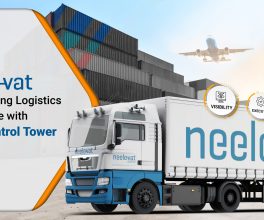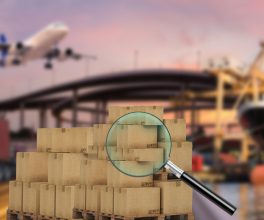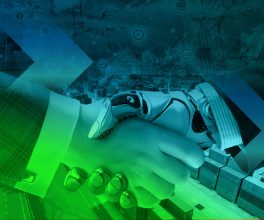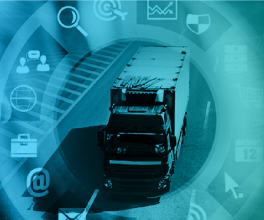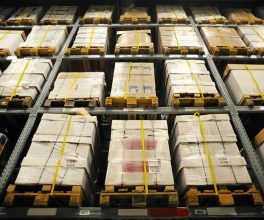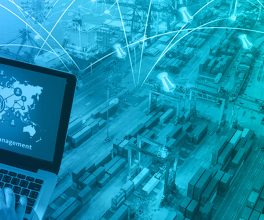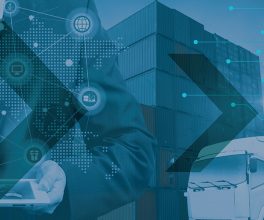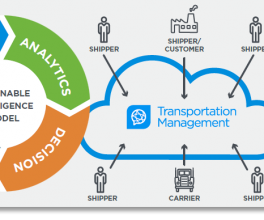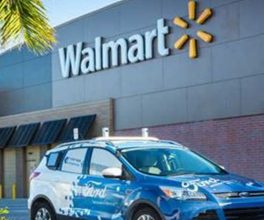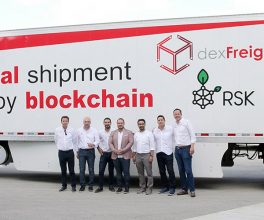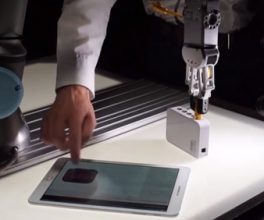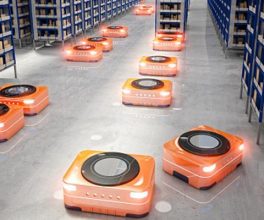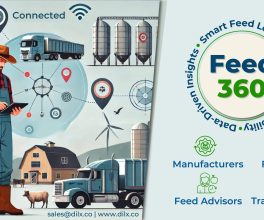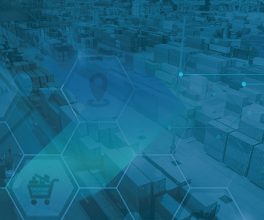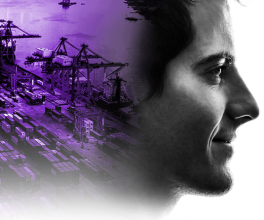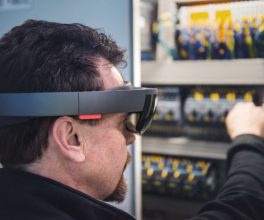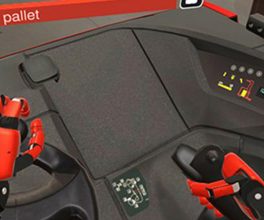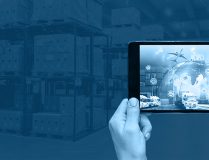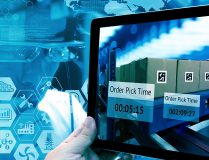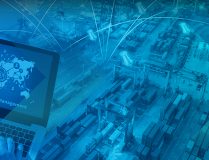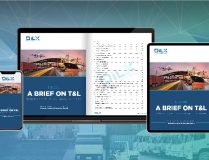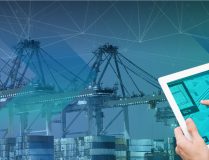Cutting-edge businesses have learned not only to back up supply chain data in the cloud. They’ve also embraced the idea that cloud-based platforms can help manage freight bookings, tracking, payment and beyond.
Forward-looking enterprises have not only equipped their employees with mobile phones to make them available anywhere, any time, they’ve also exploited smart apps that allow many crucial supply chain operations to be conducted anytime, anyplace or anywhere.
Meanwhile, savvy supply chain executives saw big data coming over the horizon and correctly anticipated it would come with the tools needed to sift and filter and make that data truly useful.
Now, we are presented with a trio of exciting new technologies that promise to enhance supply chain management operations even further — the internet of things (IoT), artificial intelligence (AI)/machine learning and blockchain.
Taken independently, these technologies could potentially greatly improve many processes central to today’s global supply chains. But, taken together, IoT, AI and blockchain form a powerful inflection point that could radically transform tomorrow’s supply chains. The robust combination of these new technologies could activate a genuinely autonomous supply chain.
The word “autonomous” has recently been more closely associated with the automotive industry, as car manufacturers, such as Audi, Ford and Mercedes, rush to follow trailblazer Tesla by introducing self-driving cars. However, when you examine the meaning of the word, it seems to provide the perfect definition for the direction in which the new, disruptive technologies could push international supply chain operations forward into an exciting future.
What would it mean to have an autonomous supply chain?
Picture a scenario in which flow-rate sensors in a water pump inside a car’s engine detect a drop in water pressure. The sensor information would be automatically transmitted to a local service center via a telematics link. The service center would be tasked with deciding whether the water pump needs to be replaced, and with connecting into the car manufacturer’s service portal. There, the service center would gain access to a machine-learning platform that examines a combination of factors, including historical information. That data would help the service technician determine when the water pump is likely to fail. Such information could take into account the overall water pump running hours, driving patterns of the car concerned, historical water pump failure rates and the service record of the vehicle. The technician could then make a recommendation about whether to repair or replace the water pump.
Say replacement is the recommended action. The service center would then contact the driver of the car to inform him or her that the water pump is likely to fail in the next 1,000 miles, but that there’s no need to worry. They have already reserved a slot in their service center to replace the water pump. The decision to replace the water pump would then automatically initiate a procurement process with the pump supplier to have a new one delivered to their service center before the owner gets the car repaired.
All the while, the manufacturer, the distributor and the mechanic have systems that automatically use the distributed ledger technology of blockchain to track the shipment of the replacement water pump from the Chinese manufacturer to the service center, located just outside Detroit. Traceability is one of the most popular applications for blockchain now.
Every B2B transaction, company or third-party logistics provider (3PL) involved with transporting the replacement water pump would be appended to the blockchain relating to this part shipment. Securing the shipment information, in this way, prevents data from being falsified. It also indirectly prevents counterfeit spare parts from entering the aftermarket supply chain.
Naturally, all transportation partners are also in the automated information loop. They receive signals that trigger actions, such as dispatching a freight forwarder to a factory, arranging dock facilities and room on a trans-Pacific ship, intermodal transport on the U.S. side, and warehousing space close to the cargo’s destination.
A parallel financial supply chain also runs alongside these actions, dispatching invoices and dispersing funds according to previously agreed terms and schedules.
All this could happen without human intervention. In theory, if your car was self-driving and could take itself off to the mechanic while you’re having dinner or playing a round of golf, you’d never even know it happened. This is not futuristic, either. The technology to make exactly this scenario a reality is available and functioning today. We just haven’t put all the pieces together and filled in all the gaps.
These compelling combinations of technology-driven services will move markets. The ability to leverage the confluence of these three new, disruptive technologies will significantly improve the customer experience, and potentially lead to a repeat purchase of another vehicle in the near future.
When it comes to a super-seamless, hyper-efficient, self-governing supply chain, the future is not just bright; it’s dazzling.
What’s stopping you?
Even with this brilliant prospect there are stumbling blocks in the way, and they’re not going to disappear without sustained effort.
For companies to obtain true value across a supply chain from this magical trifecta of technologies — IoT, machine learning and blockchain — they must first establish the critical foundation of an all-digital business ecosystem. This means ensuring all transactions are digital, as opposed to paper, between businesses.
It may seem like we live in the age of electronic information, but in truth we’ve been slow to fully adopt new technologies. It’s been fifty years since the transmission of the first EDI message in 1968, and arguably it’s taken that long for EDI to establish itself right in the core DNA of today’s supply chain.
Part of the difficulty is that we don’t always know which technology is going to emerge as the dominant, standard one.
The best technologies don’t always win out — as was proven when VHS video tape kicked superior competitor Betamax to the curb in the ‘80s. The last two decades have introduced a host of new technologies to help improve how companies connect with their trading partners across their supply chains, but they have had mixed success.
In the late 1990s, we saw the introduction of electronic marketplaces, many of which are no longer operating. (Those that survived have been highly effective, such as Covisint, one of the most popular in the automotive industry, which was acquired by OpenText in 2017).
In the early 2000s, XML was going to enable computers that exchange information and B2B documents to speak a common language. At the time, it was touted as a replacement for EDI. But 18 years later, EDI documents are still being exchanged across today’s supply chains, and XML is losing the beauty contest with rival meta-language JSON.
Paper, paper, everywhere!
Worse, even though electronic business transactions, at least in the form of EDI, have been around for fifty years, more than 50 percent of information exchanged between business partners still travels by fax, email or phone, rather than structured, automated methods, according to IDC Manufacturing Insights 2014 report: “How B2B Integration Improves Supply Chain Performance.”
The reasons include:
Uneven levels of development among global business partners. China, manufacturing hub of the world, has failed to embrace widespread digital transactions. This is due to lack of investment in telecommunications infrastructure, uneven levels of IT expertise and government regulations.
Plain ole fear of the new. Although improved data security has shifted opinion, we can see parallels to the general reluctance to embrace cloud-based technologies when they emerged in the early 2000s, because of concerns about the security of moving commercially sensitive data into the cloud.
The challenges of integration. There’s no doubt that the appetite for consuming these new, exciting technologies is there. But many executives feel they simply don’t have enough internal resources to explore the opportunities while also managing their existing IT and B2B systems.
That last point of concern constitutes a significant obstacle to exploring the full potential of new tools. It’s no wonder 66 percent of surveyed executives indicated they would consider outsourcing their B2B integration to a trusted partner if it meant that they could focus on integrating new technologies into their supply chains, according to “Digital Transformation Drives Supply Chain Restructuring Imperative,” a 2017 white paper from IDC.
Indeed, making use of third-party resources, such as outsourced integration functions, is going to be a critical step to developing autonomous supply chains.
Most companies are going to need help using disruptive technologies to transform procurement and supply chain operations.
An all-digital business ecosystem
To allow future technologies to be seamlessly integrated with minimal fuss, companies should first be looking to digitize their end-to-end supply chain. This means adopting web forms, B2B adaptors for popular accounting packages, and direct ERP integration capabilities.
As mentioned, for those companies that simply do not have the time or the expertise to leverage B2B integration solutions to create their own digital supply chain, it is viable to use an outsourced or B2B managed services approach. This allows your business to focus on embracing the disruptive digital technologies while your B2B integration requirements are taken care of. Think of managed services as an extension of your own IT department.
Once a company has its digital business ecosystem in place as a foundation, then opportunities arise to implement a truly autonomous supply chain.
The internet of things
There are many different use cases in the supply chain, in which IoT delivers:
Pervasive visibility – End-to-end visibility of shipments through highly connected supply-chain “assets” across multi-modal 3PL providers.
Proactive replenishment – Real-time monitoring of inventory levels and consumption patterns which automate replenishment processes with suppliers.
Predictive maintenance – Monitoring for potential part failures and automatic initiation of part-replacement procurement processes.
Artificial intelligence
Applying AI to traditional B2B transaction flows can certainly help to refine supply chain processes. However, real value is achieved when you feed a supply chain data lake with multiple pipelines of structured and unstructured supply chain information, including logistics data, sensor information and news and social media feeds. AI could help to decide what steps to take when some form of disruption occurs across a supply chain. It could also predict where and when a spike in consumer demand will happen.
As mentioned earlier, using AI to predict when a part is likely to fail and to provide recommendations on next steps, such as whether to repair or replace a part, could transform the aftermarket service sector. And that’s why industrial companies, such as GE, Siemens and Bosch, are taking a keen interest in advanced analytics. It not only helps to improve customer satisfaction levels, it also helps them diversify into new revenue streams from monitoring equipment and machines after sales.
Blockchain
A blockchain is a method of organizing data into a digital ledger of transactions, shared amongst the participants of a network via a distributed network of computers. Using public/private key cryptography (a method of secure communication), network participants can add data to the online ledger without the requirement of a central authority to authenticate or manage users and data. Users can append additional data to the end of the blockchain ledger in what is known as a “block.” but it is virtually impossible to change or remove data from the ledger once encoded into a block.
A block can essentially hold any type of unstructured data, such as quantity of goods shipped, description of goods and price. It could also hold information from IoT-connected sensors that monitor shipment temperature, weather en route and GPS positioning. We mentioned earlier that knowing the source of raw materials across the supply chain — from diamonds to porterhouse steaks — is becoming an important requirement, especially when product recall situations occur. Supply chain traceability really starts to become detailed and actionable when you combine blockchain and IoT technologies.
For example, if a retailer received goods from a supplier that were damaged due to high temperatures during transportation, the retailer could use the blockchain information to quickly identify how the goods were damaged. There are myriad powerful applications for a blockchain-powered, fully-connected, end-to-end digital supply chains.
Embrace the future — now
The combination of IoT, AI and blockchain is creating a new kind of supply chain — an autonomous one. Supply chain innovations that make international sourcing, manufacturing and trade more efficient have always delivered significant financial rewards. It is therefore safe to say that some enterprises will be keen to embrace these opportunities.
The autonomous supply chain will support:
A digital business ecosystem that allows trading partners to exchange electronic transactions anywhere in the world and enable seamless integration to back-end business systems and process optimization.
A highly connected environment, where sensor-based information will allow companies to establish a “digital twin” of their supply chain operations and allow physical shipment flows to be more tightly aligned with digital information flows.
A more self-aware environment, in which deeper insights into supply-chain performance can be used to refine business processes and to respond to different and unexpected situations in a more efficient way.
A single source of truth relating to the traceability of goods as they move across the physical supply chain, and an unimpeachable archive of all digital interactions between a company and its trading partner community.
However, many organizations simply do not have the internal resources to focus on researching and implementing these new and disruptive digital technologies. Outsourcing the management of your B2B integration activities, by working with an external trusted partner, can help to free up internal resources to allow your business to focus on these compelling opportunities.
Embracing this perfect storm of new technologies will embolden your business to engineer supply chain operations that are robust enough for a future of drone deliveries, self-driving trucks and robot sales assistants. There has never been a better toolkit to help you prepare for the challenges of rapidly changing market conditions and unpredictable shifts in customer demands. It’s time to seize it.
Author – Sponsored by OpenText
Courtesy of https://www.supplychainbrain.com/articles/27937-how-intelligent-business-networks-will-empower-tomorrows-autonomous-supply-chains

